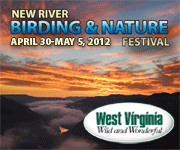The thing most people don't realize about baby birds is that they will refuse food from a person, but it's not because they aren't hungry. They're hungry all the time. That's a given. The most common thing I get from callers is, "I offered him food but he won't eat." They've usually put a dish of birdseed in front of the baby. Or they've dangled a worm in front of its face. And the baby refuses to take either, because it can't. It doesn't have the neural connections to pick up its own food.
At this point they've given up and are calling me for help, figuring this thing they're trying to save has a death wish. Well, you don't "offer" food to a frightened, debilitated bird. You pry his bill open and stuff it down him until he gets the idea that you're doing him a favor. Only when that light clicks on in his brain, sometimes a few hours to a day later, and he learns to associate you with food and comfort and good things, will he gape for you. It's got to be the right food, of course. No baby bird can eat birdseed or bread, nor can they pick it up themselves even if they could digest it. Scrambled egg. Soaked kibble. Mealworms, stuffed into its mouth. That kind of thing a baby bird will eat.
I climbed on the stepstool and pushed the box as high up under the awning as I could, directly beneath the starling's original nest, where one baby remained. I taped it as best I could to the metal struts under the awning. It wasn't very high--maybe 10' off the ground. But it was protected from the weather and people, and it was facing the same direction as the original nest opening, and I trusted that once those babies got hungry they'd begin churring in there. The parents, who had, after all, witnessed the entire procedure, would eventually figure out what had happened here, orient to the babies' hunger calls, conquer their fear and enter my makeshift starling nest box. At least that was my hope, informed by knowing a little bit about how birds think.
I got back in my car and watched with binoculars as the parent starlings came, bills laden with food, and looked worriedly down into the shrubs where they'd last seen their three babies. I never saw them orient to the box, but then the foundlings were probably sound asleep in there, resting and digesting. Their babies were gone. It would take awhile before they would find them again. It wasn't going to happen while I was there, and I had to drive Liam to Beverly for his play performance anyway.
Cynthia and I hugged, said our goodbyes and left the area, sure that we'd done the best possible thing short of getting the birds back to their original nest (which clearly wasn't a good option anyway, if three of them had fallen out already).
I went inside and thanked the manager and told him we were all set, that I hadn't fallen off the stepstool and cracked my head open, at least not any farther open than it already was, and that the box would be there for only about ten more days.
The starling parents would have to do the rest.
Next: Why do all this for three starlings? Aren't we supposed to hate starlings?





























Thursday, May 28, 2015
6 comments